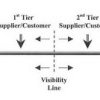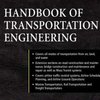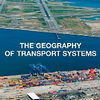 Browsing other blogs on supply chain issues this morning, I came across yesterday’s posting in The New Chain on magnified risk in multi-enterprise supply chains, underscoring how interconnected supply chains are, The posting on The New Chain actually stems from a larger feature story on IndustryWeek, highlighting how supply chain owners need to view their supply chain as a community.
Browsing other blogs on supply chain issues this morning, I came across yesterday’s posting in The New Chain on magnified risk in multi-enterprise supply chains, underscoring how interconnected supply chains are, The posting on The New Chain actually stems from a larger feature story on IndustryWeek, highlighting how supply chain owners need to view their supply chain as a community.
In-house or Out-house?
The article in IndustryWeekly starts off with comparing differences and challenges in in-house and outsourced supply chains and makes a compelling argument for why shifting to a community mindset in outsourcing
can ensure the same quality, reliability, and responsiveness as if they handled the manufacturing in-house.
Even if the manufacturing takes place out-house, product design should be kept in-house, as the UK retailer Marks & Spencer found out.
Best community practices
To create and maintain a new level of efficient and collaborative relationships that recognize, share, and reduce risk across multiple organizations, the article lists the following five best practices:
Community KPIs — agree on consistent Key Performance Indicators (KPIs) that are relevant to the entire community and that create the foundation of community goals and rewards.
Community Forecasts — establish real-time views into demand so that you can be flexible, shifting supply timing / quantity or fulfillment responsibility to an alternate supplier.
Community Assets — work quickly and confidently with your partners to optimize community assets and create a proactive sense and respond environment to change.
Community Data — establish clear lines of real-time visibility and the integrated capability to take action in order to move inventory where you need it most.
Community Technology — choose a solution built on a web-native, global platform that integrates easily with partners’ existing systems.
Community Supply Chain Management
Amar Singh, the author of the article in Industry weekly, is CEO of Amitive, a pioneer in community supply chain management solutions, and he puts it this way:
Supply chain owners need to balance the needs of the entire community or they’ll be powerless to achieve business continuity throughout the supply chain.
I think he’s right. Focusing on oneself or parts of the supply chain only will not do much good. It’s the whole that counts.
Links
- Industry Weekly – Magnified Risk in Multi-Enterprise Supply Chains
Related
- husdal.com: Product design and supply chain risk












